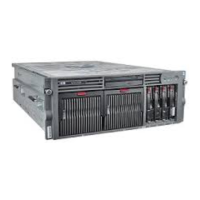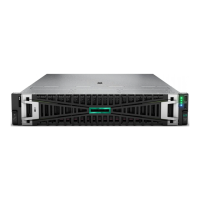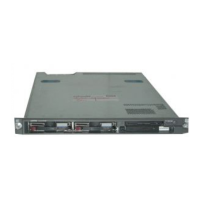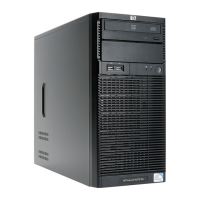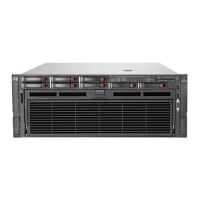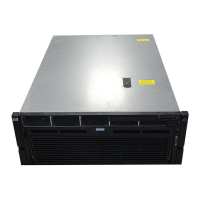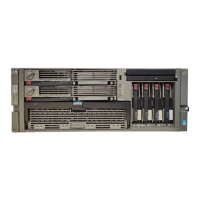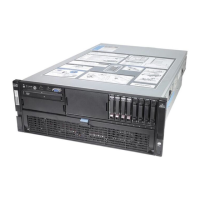Diagnostic tools 66
o
Hard drives ("SAS or SATA hard drives" on page 44)
o Peripheral devices
3. Reseat the remaining memory boards, rebooting after each installation to isolate any failed memory
boards, if applicable.
4. Replace the DIMMs with a remaining bank of memory.
5. Replace the memory board, if applicable.
6. Replace the system board.
IMPORTANT: If replacing the system board or clearing NVRAM, you must re-enter the server
serial number through RBSU ("Re-entering the server serial number and product ID" on page
58).
Expansion board-related port 85 codes
Expansion board-related port 85 codes display in the format 6xh.
IMPORTANT: Reboot the server after completing each numbered step. If the error condition
continues, proceed with the next step.
To troubleshoot expansion board-related error codes:
1. Reseat all expansion boards.
2. Bring the server to base configuration by removing all components that are not required by the
server to complete POST. This process can include removing all:
o Expansion boards (on page 48)
o Processors (on page 36), except the processor installed in socket 1
IMPORTANT: Processor socket 1 and PPM slot 1 must be populated at all times or the server
does not function properly.
o PPMs ("PPM" on page 41), except the PPM installed in slot 1
o DIMMs (on page 42), except the first bank
o Hard drives ("SAS or SATA hard drives" on page 44)
o Peripheral devices
3. Install the expansion boards one at a time, rebooting between each installation to isolate the failed
expansion board.
4. Replace the failed expansion board, if applicable.
5. Replace the PCI riser board, if applicable.
6. Replace the system board.
IMPORTANT: If replacing the system board or clearing NVRAM, you must re-enter the server
serial number through RBSU ("Re-entering the server serial number and product ID" on page
58).
Miscellaneous port 85 codes
To troubleshoot all other port 85 codes:
